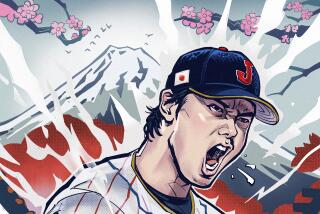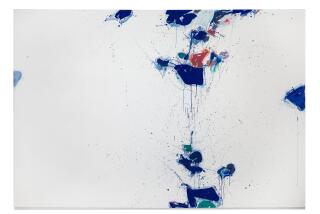European Influence on Japanese Artists
- Share via
That the French Impressionists were influenced by traditional Japanese artists is a fact well known. Fewer people are aware, however, that the process worked in reverse.
“Paris in Japan: The Japanese Encounter With European Painting,” Tuesday through April 3 at UCLA’s Frederick S. Wight Art Gallery, illuminates this East-bound assimilation.
The exhibition comprises about 75 oil paintings by 26 late 19th- and early 20th-Century Japanese artists who studied French painting of the time, either in Paris or at home, with European artists teaching at the Tokyo School of Art. Most of the works are in the style of early to Post Impressionism with a few evocative of the Barbizon School and other styles. References to Matisse, Van Gogh and others abound.
“We are so used to seeing the influence of traditional Japanese art on Western paintings,” said Wight Gallery Director Edith Tonelli recently. “But the cultural exchange went both ways.”
Japanese artists began to study Western art--its techniques and the themes--during the 1868 Meiji Restoration, “a period in which Western art, culture and technology were being assimilated very quickly by the Japanese after many years of self-imposed isolation,” Tonelli said.
“What’s interesting is that in some ways, the Japanese artists are looking at and learning from Western paintings that already show the influence of Japanese culture,” Tonelli said.
For instance, she explained, “Nude With Fans” (1938), a painting by Umehara Ryuzaburo depicting a nude woman lounging on a bed beside a dressing screen decorated with delicate fans, resembles works by such early Impressionists as Manet. Yet, Manet, as well as Matisse and Van Gogh, frequently used Japanese iconography in their paintings.
“Most Americans or Westerners are used to looking at traditional Japanese art, from before the mid 19th-Century, and we’ve begun to look at Japanese contemporary art. But the period represented in this exhibition we know very little about,” Tonelli said.
“Paris in Japan” was organized by the Washington University Gallery of Art, St. Louis, and the Japan Foundation, Tokyo. Donald F. McCallum, UCLA professor of Japanese art, acted as a curatorial adviser.
MOMA MAKES NEWS: In a long-expected move attended by some controversy, the Museum of Modern Art in New York has named Kirk Varnedoe, a professor at New York University’s Institute of Fine Art, as director of its department of painting and sculpture.
Varnedoe, 42, will succeed William S. Rubin, who will become director emeritus of the department after 22 years at MOMA, the world’s most prestigious museum of 20th-Century art.
The museum’s painting and sculpture department is the largest and most influential of MOMA’s six curatorial departments. Assuming the new, powerful post--according to the New York Times, “considered the key curatorial position in the field of modern art”--Varnedoe will oversee the department’s collection, its installation and acquisitions, and its loan program.
Donald B. Marron, MOMA’s president, described Varnedoe as “a worthy successor to the remarkable individuals who have held this important post at the museum.”
However, New York Times reporter Grace Glueck wrote recently that Varnedoe’s appointment met with some dissatisfaction from members of the museum’s painting and sculpture department staff whose objections included skepticism that Varnedoe had the proper background for the job. These staff members felt that while MOMA is a museum of 20th-Century art, “Varnedoe’s engagement was primarily with art of the 19th Century,” Glueck reported.
Varnedoe refuted this in a recent telephone interview, noting that only his published scholarly work, for the most part, has focused on 19th-Century art. “Most of my publications tend to deal with the origins of modern art (occurring in the 19th Century),” he said. “But I don’t think that’s an entirely accurate reflection of my expertise,” having taught various aspects of 20th-Century art at the Institute of Fine Art, one of the foremost institutes of its type nationwide.
Varnedoe said he has not set an agenda yet, and “plans to consult a great deal with my staff and my colleagues before I lay out any precise road map” for the painting and sculpture department, where he has been adjunct curator since 1984.
Recipient of a highly coveted MacArthur Foundation Fellowship for achievement in the arts and sciences, in this case worth about $190,000, Varnedoe is also “widely recognized as an outstanding writer and historian,” Glueck wrote.
More to Read
The biggest entertainment stories
Get our big stories about Hollywood, film, television, music, arts, culture and more right in your inbox as soon as they publish.
You may occasionally receive promotional content from the Los Angeles Times.










